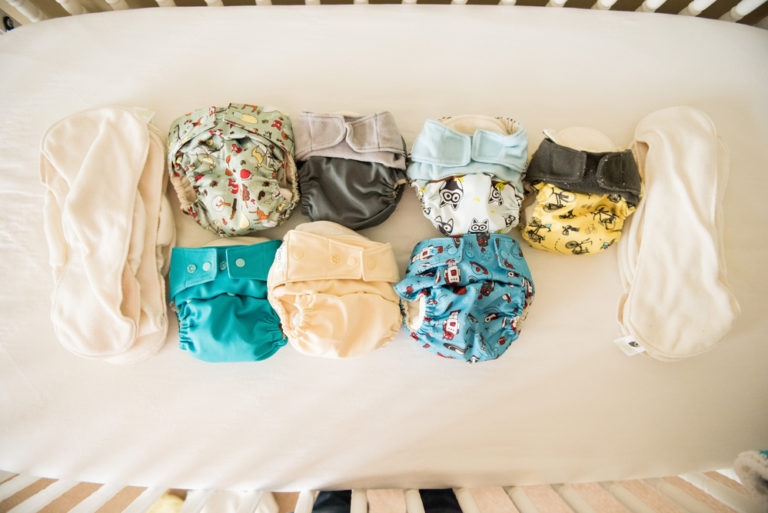15 Practical Tips to AVOID Diaper Blowout (2024)
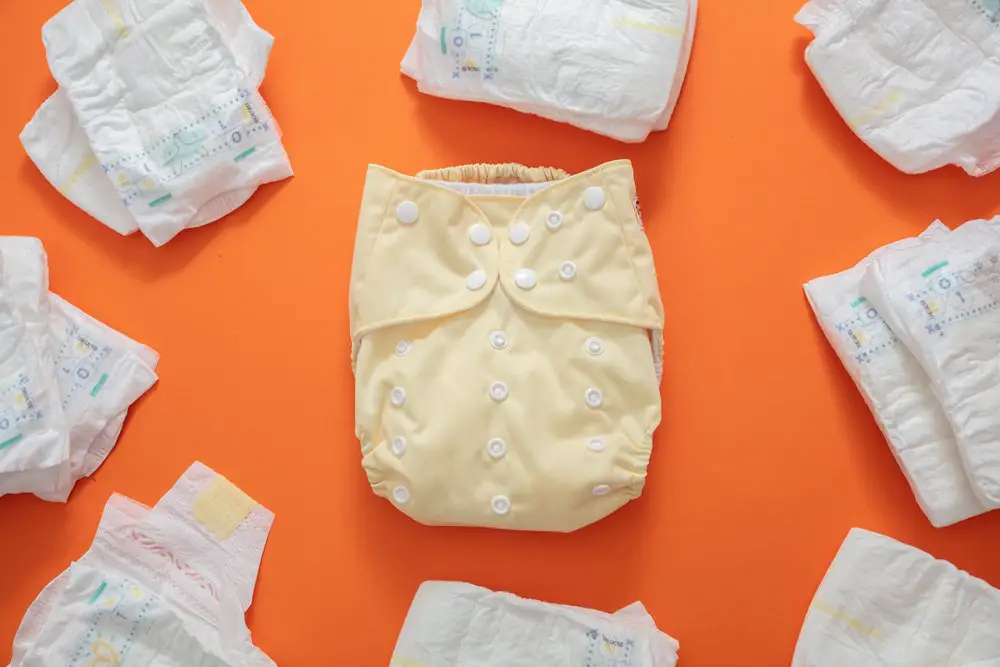
Nobody likes a messy diaper blowout. Not only do they create extra laundry, but adequately cleaning your baby afterward can be challenging, especially if you’re not home.
While blowouts aren’t 100% preventable, some tips and tricks can lessen the chances. Read on to discover the best ways to prevent diaper blowouts and what to do when they happen.
1. Get the Right Sized Diaper
Diaper explosions are gross. Messy, poopy babies are no fun, and sometimes a blowout requires a bath. One of the best ways to prevent diaper blowout is by putting your baby in the correct sized diaper. A correctly fitting diaper seems like common sense, but parents don’t always realize that their baby is in an ill-fitting diaper.
Check the weight recommendations on the diapers your baby is wearing; your baby may have gone up in size without you even realizing it. Diapers that are too big will also create diaper blowouts because of the extra space.
If your baby is wearing cloth diapers, ensure the elastic bands are tight enough around the legs and waist. If the bands are leaving marks, then the diaper is too tight.
If your baby consistently has diaper leakage, it is probably time to reassess their diaper size.
In general, size one diapers are for babies 8-14 lbs. Size two fits 12-18lbs, and size three fits 16-28 lbs.
2. Position the Leg Cuffs Correctly
While diaper overflow typically comes up the backside, it can also leak out the leg cuffs as well. The leg cuff’s function is to help create a seal around your baby’s bottom. Correctly fitting and positioning the leg cuff can prevent a leaking diaper.
The cuffs of the diaper should be facing outward. A properly fitting cuff allows you to fit one finger between the cuff and your baby’s leg; it needs to be snug but not tight. If the cuffs are leaving a red ring, they are too tight.
If you have taken steps to ensure that your diaper cuffs fit correctly and are still experiencing frequent baby blowouts, try using another diaper brand. Unfortunately, not all diaper brands are the same; size one diapers from different brands may fit differently, and a different style may fix the poop blowout problem.
3. Position the Waistband Correctly
The waistband on your baby’s diaper is a key component in preventing diaper blowouts. However, if the waistband is folded over or positioned too low, the seal that helps hold in the blowout will be broken.
The waistband should be positioned mid-back. When putting on a clean diaper, lay the diaper out flat and make sure the band is smooth and there are no creases or folds.
A diaper explosion can also occur if the waistband isn’t secured tightly enough. Pull the elastic tabs, so the diaper fits snuggly around your baby’s waist. You should be able to fit one finger between their waistband and their belly.
If you are using cloth diapers with snaps, try adjusting the diaper’s fit by either tightening or loosening where you position the snaps. You may also need to adjust the elastic bands in the diaper.
4. Change Your Baby’s Diapers Frequently
One diaper blowout solution is to increase how often you change your baby’s diapers. Disposable diapers are incredibly absorbent, and therefore, your baby may not always fuss when their diaper is wet. However, if they are in a heavy, wet diaper and have a big bowel movement, it is the perfect recipe for a poop explosion.
On average, you should change a disposable diaper every two to three hours and a cloth diaper every one to two. Once your baby is a toddler, they will be able to hold their bladder and bowels for more extended periods, and you may be able to extend the time between diaper changes.
If you are already changing diapers every few hours but experiencing blowouts, try changing them more frequently. If upping the frequency of diaper changes doesn’t help, you may need to examine your diaper fit or try a new brand.
5. Find the Right Diaper Brand
Diapers can be a little bit like Goldilocks, and it may take a few tries to find the brand that works best for you. There will be parents in every diaper brand’s camp that swear their brand is the best, but you need to figure out what works for you. Personally, my two kids fit perfectly in Target brand diapers, but I also used Huggies from time to time.
I know others who only bought Pampers or Luvs. But, all in all, I never had a problem with most brands, the exception being extremely cheap ones picked up at the dollar store in a pinch.
That being said, if an exploding diaper is a common occurrence in your home and you’ve already tried adjusting the fit, waistband, and cuffs, it may be worth the time to check out a new brand. Most brands sell small packs of around 20-25 diapers, so you won’t be spending a ton of extra cash even if they don’t work out.
6. Use An Envelop Onesie
Envelop onesies can’t prevent diaper fails, but they can make cleaning up after a blowout diaper much simpler and cleaner. Envelope onesies have shoulder flaps or folds that enable a parent to roll the onesie down rather than trying to pull it up over the baby’s head.
If you have a baby diaper explosion, the last thing you want to do is pull all that poopy mess up over their head. To use an envelope onesie, simply roll the onesie down, unsnap it, and pull it off at the baby’s legs.
An envelope onesie isn’t blowout prevention, but it is a diaper blowout solution because it can keep the messy poop from traveling too far. As a bonus, onesies are relatively inexpensive, so it’s no big deal if you have to toss some away after a blowout. I threw quite a few onesies away when my sons were little!
7. Use Diaper Blowout Blockers
If you’ve never heard of this device, a Blowout Blocker is a piece of washable, reusable fabric that attaches to your baby’s diaper. It uses velcro to attach around your baby’s waist, and the fabric extends up along their back.
A Blowout Blocker is made from polyester and is waterproof. The inner layer is soft, and the fabric has wicking properties to pull excess moisture from your baby’s skin and into the blocker’s absorbent layer.
You can use blowout Blockers with both disposable and cloth diapers. If your baby has frequent blowouts no matter what you try, and some babies just do, this device might be your key to prevent blowouts. They cost about $15 apiece, which is an affordable option to have a few on hand.
While you’ll need to wash Blowout Blockers, it will save your baby’s clothes and bedding.
8. Test Out Cloth Diapers
Another diaper blowout solution is to give cloth diapers a try. Babies in cloth diapers tend to have fewer blowouts than disposables. There are a few reasons why cloth offers diaper blowout protection.
First, a cloth diaper cannot hold as much liquid, so there isn’t as much stuff in the diaper. Second, because they are less absorbent, you will change your baby’s diaper more frequently. Third, with cloth diapers, you can work to achieve the perfect fit for your baby.
Of course, you can’t wholly avoid diaper blowouts, even with cloth, so some of the same rules apply. Your baby needs to be wearing the correct size diaper, and the elastic bands around the waist and leg cuffs should fit snugly.
With repeated washings, the elastic in cloth diapers can begin to wear out or break down, so you may need to replace the elastic if you are experiencing blowouts with your baby in cloth.
9. Hold Your Baby Correctly
Sometimes a leaking diaper is caused by the way the baby is being held. The diaper may not actually be a blowout, but if the way you are holding your baby puts pressure on their diaper or bottom, it can cause an exploding diaper.
If your baby has already had a poopy diaper blowout and you can see the poop oozing out their diaper or up their back picking them up and carrying them to the changing table can be a challenge.
Make sure you have all your diaper changing supplies ready to go, including plenty of wipes. Then, pick up and gingerly carry your baby to the changing table to prevent any more poop from leaking out or onto you. Consider using disposable changing pads when you have blowouts, so you don’t have to worry about washing your changing pad cover every time.
10. Always Prepare for a Blowout
The famous comedian troupe Monty Python is known for saying, “No one expects the Spanish Inquisition,” but you should always expect a blowout. Unfortunately, a baby diaper blowout will happen at some point no matter how many diaper blowout prevention steps we take. The best thing you can do is to be prepared.
Always travel with at least two extra sets of clothing, plenty of extra diapers and wipes, and a portable changing pad. It is also a good idea when traveling or during lengthy errands to have a wet bag along to store any messy clothes that are salvageable.
Due to stricter health policies, some airlines no longer allow parents to dispose of dirty diapers in the plane bathrooms, so having a wet bag on hand will save you and your fellow passengers from smelling a dirty diaper the rest of the flight.
11. Don’t Change Their Diaper Immediately
Not all babies poop the same. Some have apparent poop faces or noises, while others are very quiet. Changing a diaper too soon can lead to a baby blowout. If you notice they are pooping or have just picked up the whiff of poop smell, give it a few minutes to allow them to finish.
Waiting a few minutes also gives the poop a chance to absorb into the diaper. If you have an exclusively breastfed baby, their poops can be very runny. A short delay of five to seven minutes gives the diaper a chance to do its job, so it should be a little easier to clean up, even if it is messy.
A third reason to wait is that if you immediately change their diaper and they are not finished going, you will find yourself in a very messy situation. A baby blowout diaper is one thing, but a blowout all over the changing table is an entirely different mess.
12. Use Diapers for Active Babies
Once they figure out how babies are movers and shakers, so use a diaper designed for crawlers or walkers. One of the major diaper blowout causes is ill-fitting diapers, so be sure to get ones that fit your baby’s activity level.
Two brands that are specifically for babies on the move are Pampers Cruisers and Huggies Lil Movers. Both diapers come in sizes 1-7 and are designed to stay in place as your baby crawls, walks, and runs.
The new Pampers Cruiser 360 pulls on like underwear, which means no tabs can come undone as your baby moves. Pull-on diapers are great because they move less, but no tabs make diaper changes, especially messy ones, more challenging. One solution is to rip the sides or cut them off if it’s a messy change.
If you use cloth diapers, consider using all-in-ones instead of hybrids. The two-piece system of the hybrid means the diapers may move and shift along with your baby’s movements making blowouts more frequent.
13. Use Diapers for Heavy Wetters
One reason blowouts occur is that the diaper is over-saturated with urine and cannot hold any more liquid. Consider using diapers geared towards heavy wetters if your baby is prone to heavy wetting or frequent blowouts.
If you use cloth diapers, look into inserts made with Zorb. Zorb is a highly absorbent synthetic material and rivals the absorbency of disposable diapers.
Luvs Ultra Leakguard is designed for 12 hours of dryness, while Pampers Pure Protection comes with a wetness gauge built in so you can see if your baby is wet or dry without taking the diaper off. A fuller diaper increases the chances of a blowout.
14. Use A Cloth Diaper Cover
Even if you are a disposable diaper user, you can use cloth diaper covers to prevent leaks and blowouts. This hack is handy overnight because it will help your baby sleep better and prevent bedding and pajamas from becoming ruined. Few things are worse than having to change your child’s bedding and clothes in the middle of the night.
Eventually, babies stop pooping overnight, but it takes a while for their bodies to adapt to day versus night. Until they figure out how having a system to prevent overnight blowouts will help everyone sleep more soundly.
Cloth diaper covers typically have elastic around the waist and leg cuffs, so it adds that extra layer of protection to seal any messy poops in. Plus, they are waterproof, so even if anything would seep through the disposable, it hopefully won’t get past the diaper cover.
15. Use Overnight Diapers
There are specific diapers for overnight that are designed to hold extra wetness, and these can be some of the best diapers to prevent blowouts because they are ultra-absorbent.
So if your baby is a heavy wetter or poops a lot, using overnight diapers might be the way to go for a little while. They are also a good option for when your baby is sick and has diarrhea and might be the best diapers for blowouts up the back because of their extra absorbency.
Pampers, Huggies, Luvs, Honest Company, and Up & Up all make overnight diapers that have received positive reviews.
Overnight diapers are more expensive than regular diapers, so if you decide to go this route, you will need to decide how long to use them or if you just want to stock up to put these on once you know your baby’s poop schedule.
FAQ
What does diaper blowout mean?
A blowout is when a baby’s poop leaks out of their diaper; usually up their back or out the leg holes.
Why do diaper blowouts happen?
Blowouts could happen for several reasons, including ill-fitting diapers, a diaper that hasn’t been changed regularly, illness, an active moving baby,, or holding the baby a certain way.
How to prevent diaper blowouts up the back?
To prevent blowouts up the back, make sure your baby’s diaper fits properly. Change their diaper on a regular basis and use a Blowout Blocker.
How to prevent diaper blowouts?
To prevent blowouts, make sure the leg cuffs fit correctly and are not too loose. Also, change your baby’s diaper regularly and watch that you don’t squish their diaper when holding them.
How do I put on a diaper to prevent leaks?
To prevent leaks, lay the diaper out flat and make sure the back edge is not creased or folded. Next, secure the diaper around your baby’s waist and ensure the leg cuffs are turned out.
How should a diaper fit?
A diaper should be snug but not tight. You should be able to fit a finger in between their waistband and the leg cuffs.
When to go up a size in diapers?
Check the weight recommendations on your baby’s diapers. If they have frequent blowouts or leaks, it might be time to move up a size.
What are the best diapers for blowouts?
Any diaper that fits properly will help prevent blowouts. Consider using overnight diapers if your baby is a heavy wetter or has a lot of blowouts.

Laurel Davidson
Laurel brings her passion for parenting and years of problem-solving experiences to ParentingMode. She is the editor of ParentingMode, ensuring that the content is relevant and valuable to the readers. Laurel received her master’s degree in public administration with a certificate in economic development. She is a stay-at-home mom, raising two adorable kiddos, Aurora and Thomas. Laurel enjoys sharing her experience as a parent, traveling, and good food.

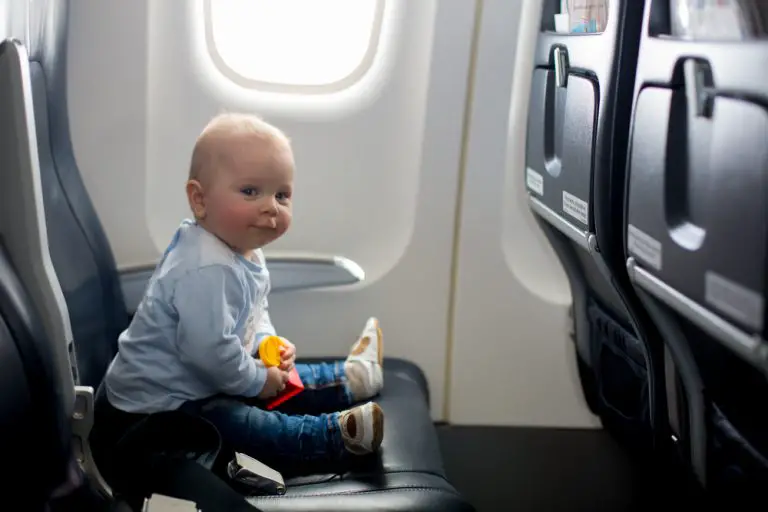
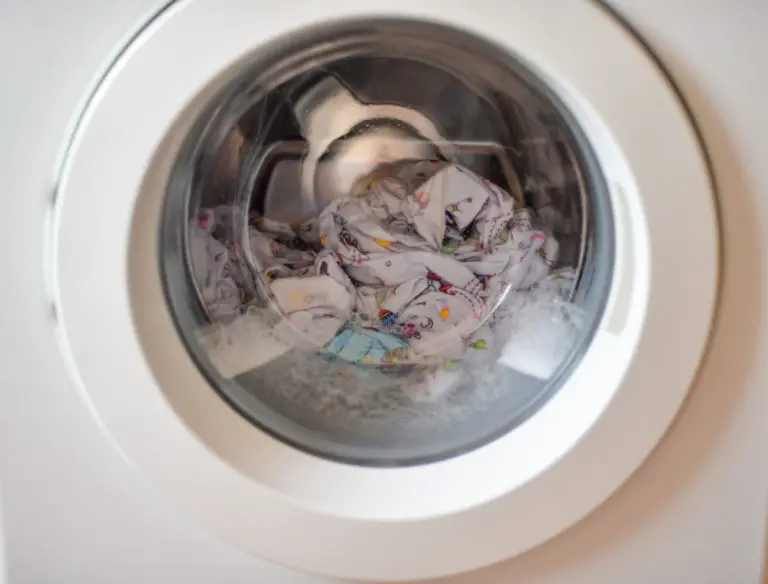

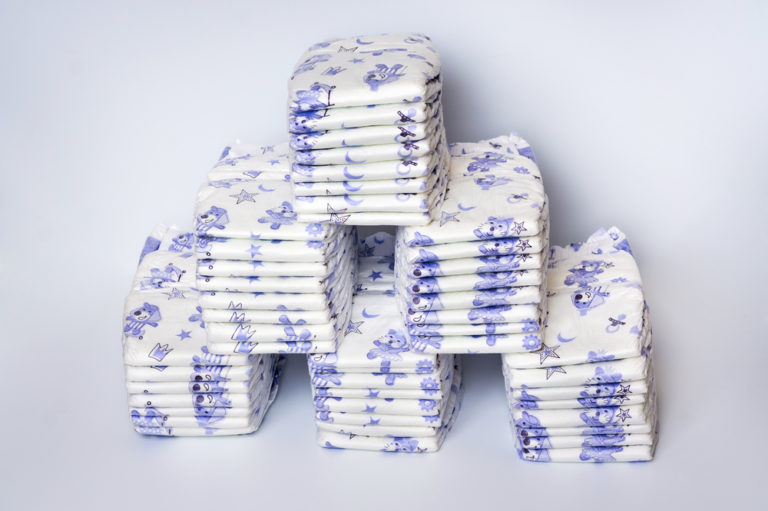
![12 Best Natural Diapers in 2024 [Chemical-Free and Safe]](https://parentingmode.com/wp-content/uploads/2022/06/Depositphotos_108876360_S-768x512.jpg)
